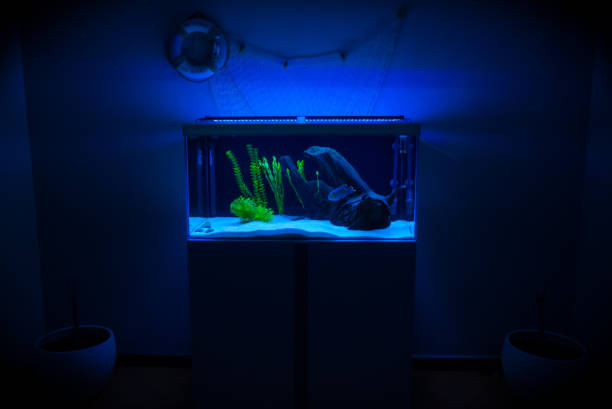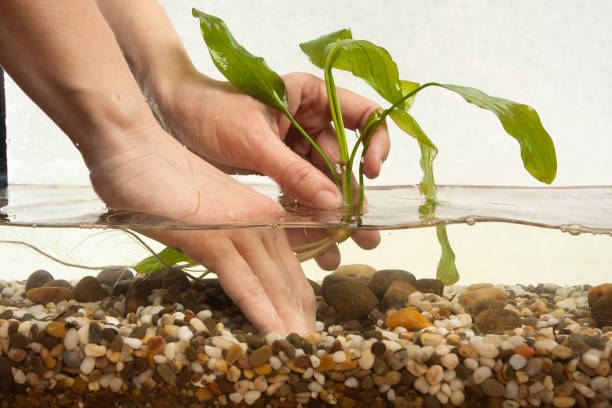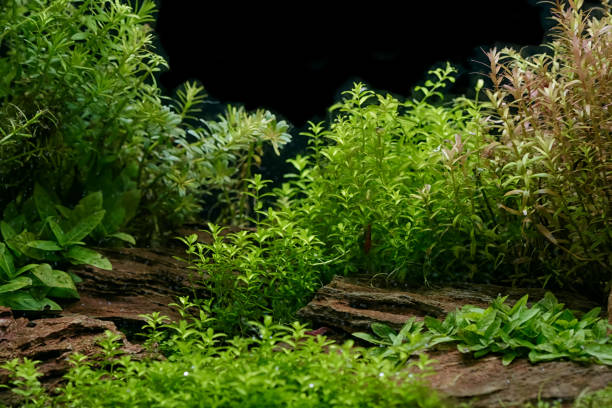How to Anchor Aquarium Plants: Steps and Tips
Aquarium plants are one of the most widely used aquarium decorations and can be found in almost every modern-day aquarium. The combination of different plants together in a single aquarium creates an amazing underwater world for you to enjoy. Most plants are indeed very easy to grow and maintain, but there are some steps that you need to follow to keep them from floating and disturbing your pet fish.
We have listed a few things you need to know about these tips.
Table of Contents
How to Anchor Aquarium Plants: Step-by-Step Process

Step 1: Create the Base
If you’d like to keep your plants both in their pots and anchored to the ground, you can use a thick layer of sand as a foundation. This will help ensure that the plants don’t move around too much and suffer from root strain. You can also add some rocks or other decorative objects for added stability.
Step 2: Weigh Down Plant’s Base Using Materials
Make sure to put a weight around the base of your plants so that they don’t float and disturb your fish. This can be done by using large rocks, heavyweights, or even old pots and pans from the kitchen. You don’t want to just place all of your weights at one end of the tank – this will cause uneven pressure which could damage your plant(s). Try to have different weights distributed evenly around the circumference of the tank.
Step 3: Place and Tie Plants
Place your plants in a location that receives indirect light but avoids direct sunlight. This will help to keep your plants healthy and flowering. If you want to keep your plants from floating, tie their roots to rocks or the bottom of the tank using potting soil and a string or fishing line. This will help them get established more firmly in the substrate and reduce the likelihood of them drifting away. Keep an eye on your plants so that you can remove any plants that are growing too tall or crooked, as this can cause water issues and possible damage to your tank.
Step 4: Use Driftwood as Extra Support
If you want to give your plants a little more support, you can wrap them around some driftwood or other sturdy object in the tank. This will help to keep them from flopping around too much and becoming prone to damage.

Step 5: Putting Plans in Pots
If you want to keep your plants in their pots, be sure to transplant them into the tank when they are ready to move – this will help avoid any potential root problems. You can also place the pots in the tank before you add water, which will help them to settle into their new home more quickly.
Step 6: Utilize Plant Anchors
If you’d like to keep your plants in place without using any props, you can use plant anchors. These are small plastic or metal frames that you attach to the bottom of your tank using a fishing line or a strong adhesive. They come in different sizes and shapes, so be sure to find one that will fit the container and plant(s) you’re planning on using it with.
Step 7: Use Mesh for Stronger Grip
Use a section of sturdy wire mesh to anchor the aquarium plants to the bottom of your tank, using screws or small nails as necessary. A common mistake made by new aquarists is not anchoring their plants down properly and this can result in major problems for them later on. You need at least 2-3 inches of the substrate beneath your plants for them to grow roots into; too much weight can cause root problems. It’s also resistant to algae and fungus, so it will help keep your plants healthy while they grow.
Step 8: Take Advantage of Crevices
If you don’t want to use any of the above methods, you can simply plant your plants in crevices and hope for the best. This is an option if the soil in your tank is already heavily populated with roots and rocks, or if you just don’t have enough space to spare. Just be sure to pre-fertilize and water them regularly while they’re growing; otherwise, they may end up looking a bit scraggly.

Why Do Aquarium Plants Need to Be Anchored?
- Aesthetic Purposes: Aquarium plants are often used to create an aquatic look in your home, and that means they need to be anchored to the bottom of the tank so they don’t move around. This will help keep them from getting squished or eaten by fish or other organisms that live in water ecosystems.
- Height Control: If you want your plants to stay at a certain height above the water level, anchoring them to the bottom will help ensure they stay put. You can also use clips, netting, or other supports to keep them in place, but attaching them directly to the tank is often more secure and easier to manage.
- Root Growth: Aquarium plants need soil to grow, so if they’re not rooted in some way (either by being attached directly to the bottom of a tank or planted into crevices ), they will likely spread out and grow too tall. Anchoring them to the bottom helps keep their roots in one place, which benefits both their growth and stability.
- Fish Aggression: If your fish get too aggressive towards other inhabitants of your tank, it may be because they feel threatened by the anchored plants. If you want to keep a peaceful aquatic environment for your fish, attaching plants to the bottom of the tank is one way to do that.
- Filter and Flow: Some plants, like Java fern, can grow quite quickly if they have enough substrate and water to nourish them. If your filter isn’t powerful enough or the flow rate is too high, this type of plant can get uprooted or torn apart.
- Twisted and Kinking Roots: If your anchored plants are twisted or kinked in any way (due to excess weight, shaking the tank, etc.), it will be much more difficult for them to grow and survive.